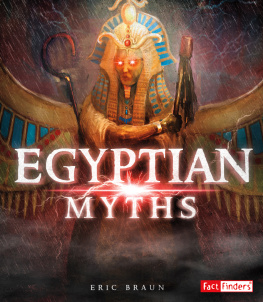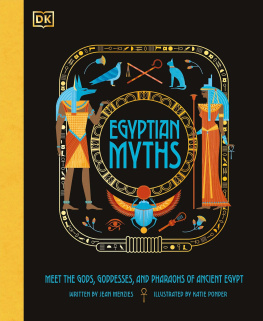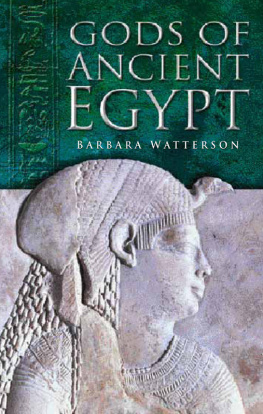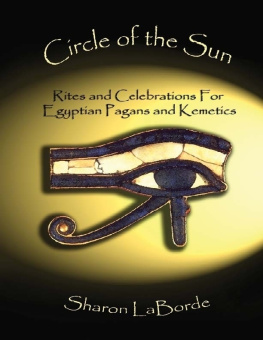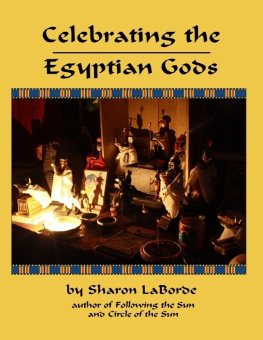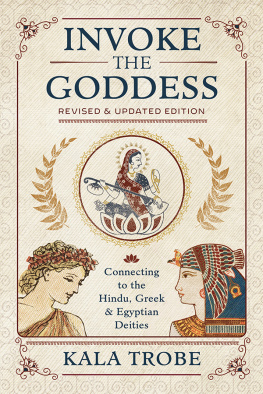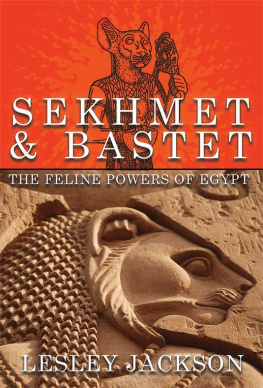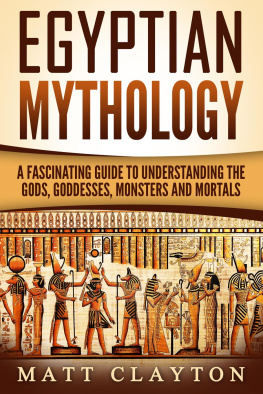About the Authors
Judith Page is a well-known artist specializing in representations of Egyptian pantheon groups with a strong emphasis on astronomy. Her work has been featured on the covers of numerous magazines and books. Visit her online at www.judith-page.com.
Ken Biles (Wheat Ridge, CO) is a writer and High Priest who has been practicing Witchcraft for nearly twenty-five years. Biles was co-host of Full Circle, the first Pagan radio show, for ten years. He now teaches the Craft both in person and online. Visit him online at
www.CyberWitchcraft.com.
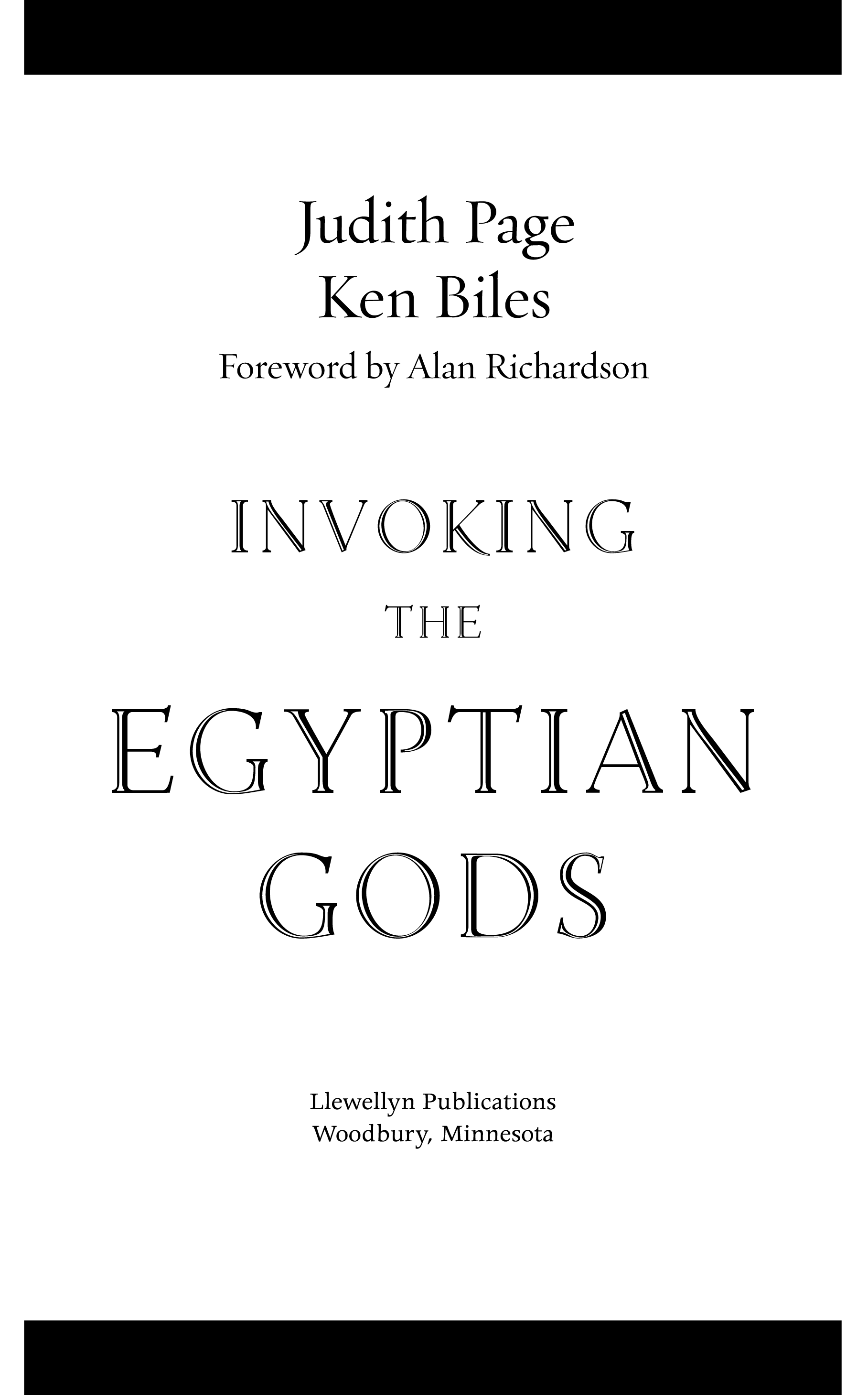
Copyright Information
Invoking the Egyptian Gods 2011 by Judith Page and Ken Biles.
All rights reserved. No part of this book may be used or reproduced in any matter whatsoever, including Internet usage, without written permission from Llewellyn Publications, except in the form of brief quotations embodied in critical articles and reviews.
As the purchaser of this e-book, you are granted the non-exclusive, non-transferable right to access and read the text of this ebook on screen. The text may not be otherwise reproduced, transmitted, downloaded, or recorded on any other storage device in any form or by any means.
Any unauthorized usage of the text without express written permission of the publisher is a violation of the authors copyright and is illegal and punishable by law.
First e-book edition 2011
E-book ISBN: 9780738730264
Book format by Bob Gaul
Cover art: Parchment Winston Davidian, Illustration Dave Stevenson/
Jennifer Vaughn Artist Agent
Cover design by Lisa Novak
Editing by Patti Frazee
Interior illustrations by Llewellyn art department
Llewellyn Publications is an imprint of Llewellyn Worldwide Ltd.
Llewellyn Publications does not participate in, endorse, or have any authority or responsibility concerning private business arrangements between our authors and the public.
Any Internet references contained in this work are current at publication time, but the publisher cannot guarantee that a specific reference will continue or be maintained. Please refer to the publishers website for links to current author websites.
Llewellyn Publications
Llewellyn Worldwide Ltd.
2143 Wooddale Drive
Woodbury, MN 55125
www.llewellyn.com
Manufactured in the United States of America
This book is dedicated to the late Jerry Clifford Welch, known as Khiron The Kuei-Shen Hsien of The Maitreyan Order of Hsien Tao, who spiritually guided us through Hebet En Ba: The Egyptian Mystical Rites.
Acknowledgments
I thank my coauthor Ken Biles for helping tackle a most difficult and serious piece of work. Apart from his material adding extra quality, his magickal experience pushed the practical side of invocations into another dimension. Ken also reinforced my notions about Deity.
I thank, too, my partner Alain Leroy for always being there when I needed a sounding board; Stephen Quirke, B.A., Ph.D., Professor in Egyptology, Curator of the Petrie Museum, London, for checking and advising on the hieroglyphs used throughout the book; Jan Malique for her invaluable contributions, and Alan Richardson, friend and fellow accomplice in the arts magickal. To Caroline Wise, a long-standing friend who works tirelessly for the Pagan network throughout Europe and North America, I thank her for reviewing this book.
Judith Page
I would like to thank Judith Page for inviting me to work with her. I have wanted to publish something for many years, but just never did anything about ituntil now.
I also want to thank the love of my life, Jamie Adams, for always being there, and supporting me no matter what. To the Denver Pagan community, which has given me so much and allowed me to meet so many other like-minded people.
Ken Biles
Contents
: Isis
Invoking Isis
: The Black Isis
Invoking the Black Isis
: Sobek and Harwer
Invoking Sobek and Harwer
: Horus of Edfu Heru
Invoking Heru
: Sekhmet
Invoking Sekhmet
: Nun
Invoking Nun
: Khonsu
Invoking Khonsu
: Amon
Invoking Amon
: Anpu
Invoking Anpu
: Set
Invoking Set
: Hathor
Invoking Hathor
: Nut
Invoking Nut
: Set In the Setereion
Invoking Set In the Setereion
: Osiris
Invoking Osiris
: Sobek
Invoking Sobek
: Ptah
Invoking Ptah
: Djehuty
Invoking Djehuty
: Shu and Tefnut
Invoking Shu and Tefnut
: The House of Eternity .
: Set and Horus
Invoking Set and Horus
: Bastet
Invoking Bastet
Foreword
Judith Page has spent more time working with the deities of ancient Egypt than anyone I know. Hers is not the cutesy, pretty-pretty, insufferably nice approach which blights so many books on this topic. She meets the darkness within these deities head-on. She does this because this is where the gems are hidden; this is where true gnosis and healing can be found.
When affecting to invoke these multilayered and elusive energies, too many writers do little more than use bad poetry to summon up the more precious aspects of their own egos. Judiths work, however, contains hidden levels and buried messages from the First Time and beyond. It will allow you to leap directly into the powerful undercurrents of Egyptian magick and puts you at risk of being changed forever.
Believe what I say: this is the real thing...
Alan Richardson
Wiltshire, England, 2010
Preface
The ancient land of Khemit (Egypt) was blessed because it was created in the image of heaven. To be more precise, everything governed and that moved in heaven descended to Khemit and was transformed there. According to the ancient Egyptians, this land was the temple of the whole world where the gods came down to walk with man.
It should be pointed out that, for the most part, the indigenous people who inhabited Khemit in its infancy conceived the early places of worship. They would have gazed in awe on the ever-moving bodies in the heavens above them, and, in those marvelous phenomena, recognized the creator who ruled the world.
In time, early man built houses of worship that were mere huts of plaited wickerwork; the front of the roof was decorated with projecting wooden beams with a few short posts and two high poles attached. The altar consisted of a reed mat and, for celebrations and festivals, simple floral bowers were erected.
Primitive as these early places of worship may have been, they were the footprint of the great religious structures that would be inherited by Egyptians of historical times: the monuments of Khufu, Amenemhet, and Rameses ll. They would be known as the gods mansion, home of the god or goddess, sacred spaces that were permanently consecrated for all time.
It is within the gods mansion or temple that we find the link between the macrocosm, the great world, and the microcosm, man viewed as the embodiment of the universe in miniature. The temple, therefore, was a stage on which meetings were
performed between the god, or Neter, and Pharaoh, who represented his subjects.
The Egyptian temples were beautifully and reverently painted by artisan priests, the colours and bas-relief were all dedicated to the Neteru. But the temple should not be viewed as an art gallery where forms were displayed as mere decoration; instead, we must try to view it as the connection between form and function. The temple was a machine, a powerhouse for generating divine energy for the benefit of one and all. It was the place in which cosmic energy came to dwell and radiate to the land of Khemit and its people. In various ancient Egyptian texts, the temple or pylon is described as follows:
Next page

